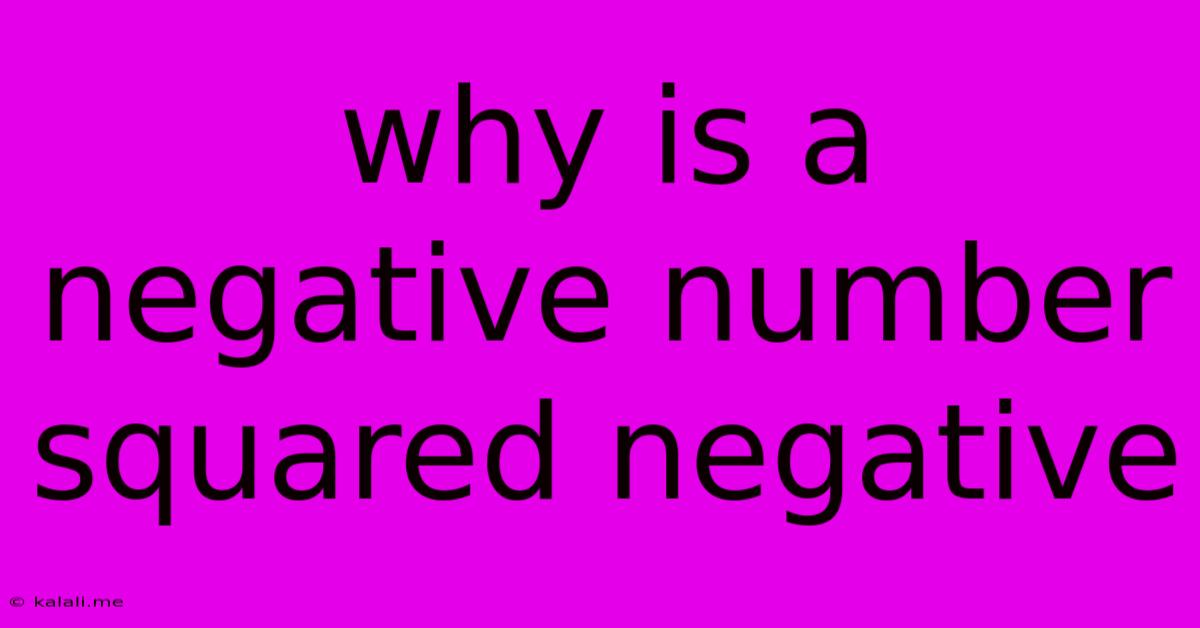Why Is A Negative Number Squared Negative
Kalali
May 26, 2025 · 2 min read

Table of Contents
Why Isn't a Negative Number Squared Negative? Understanding the Math Behind Squaring
Many students, even those comfortable with basic arithmetic, stumble upon a seemingly paradoxical concept: why isn't a negative number squared negative? The answer lies in understanding the fundamental definition of squaring and how negative numbers interact with multiplication. This article will demystify this concept, clarifying the rules and the underlying logic.
The Definition of Squaring: Squaring a number simply means multiplying the number by itself. For example, 3 squared (written as 3²) is 3 * 3 = 9. This applies equally to negative numbers. Therefore, (-3)² means (-3) * (-3).
The Rule of Signs in Multiplication: The key to understanding why a negative number squared is positive lies in the rules of multiplication involving negative numbers:
- Positive * Positive = Positive: This is straightforward and intuitive.
- Negative * Negative = Positive: This is the rule that resolves the apparent paradox. Think of it this way: multiplying by -1 is equivalent to flipping the sign of a number. When you multiply a negative number by -1, it becomes positive. Therefore, multiplying a negative number by itself (which is the same as multiplying it by -1 twice) results in a positive number.
- Positive * Negative = Negative: And vice-versa.
Illustrative Examples:
Let's illustrate with a few examples:
- (-2)² = (-2) * (-2) = 4
- (-5)² = (-5) * (-5) = 25
- (-1)² = (-1) * (-1) = 1
Common Mistakes and Misconceptions:
A frequent mistake is confusing squaring a number with multiplying a number by -1. Remember:
- (-x)² means (-x) * (-x) = x² (always positive for real numbers x)
- -x² means -(x * x) (always negative for real numbers x except x=0)
The minus sign in -x² is applied after the squaring operation. This is a crucial distinction.
The Importance of Parentheses:
Parentheses are crucial when dealing with negative numbers and exponents. Consider this example:
- -3² = -(3²) = -9 (The minus sign is outside the squaring operation)
- (-3)² = (-3) * (-3) = 9 (The minus sign is included in the squaring operation)
In Summary:
A negative number squared is positive because the multiplication of two negative numbers always results in a positive number. This principle stems from the fundamental rules of multiplication and is essential for correctly working with negative numbers and exponents in algebra and beyond. Understanding this concept is a building block for more advanced mathematical concepts. Remember the rules of signs and the importance of parentheses to avoid common errors.
Latest Posts
Related Post
Thank you for visiting our website which covers about Why Is A Negative Number Squared Negative . We hope the information provided has been useful to you. Feel free to contact us if you have any questions or need further assistance. See you next time and don't miss to bookmark.